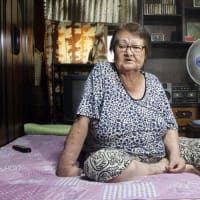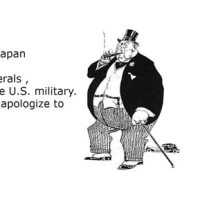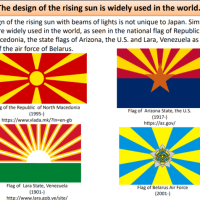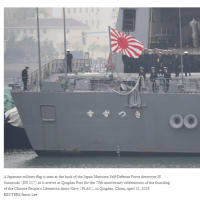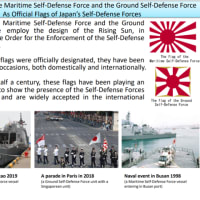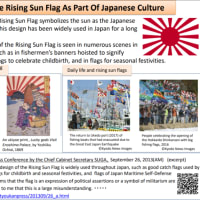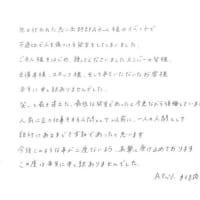mozu
@mozumozumozu
麻生発言が日本語圏ではすぐに流れたのに英語圏でしつこく取り上げられているのが変な感じ。
そりゃあ、まあ、マッカリ氏などの誤訳と誤報のせいであるとは、思う。
いつものごとくデリメに目をとおしていると、
One in six patients put on controversial care pathway last year has dementia
Liverpool Care Pathway aims to reduce suffering in the last hours and days of a dying person's life
Some 130,000 people are believed to be placed on the pathway every year
By DANIEL MARTIN
という記事があった。
At least 20,000 people with dementia are put on the controversial Liverpool Care Pathway every year, Parliament has been told.
A national audit suggests that one in six of the people placed on the pathway each year have either a primary or secondary diagnosis of Alzheimer’s, or another form of dementia.
Dr Philip Howard, a consultant gastroenterologist in London, said this raised huge concerns because these patients could not have been meaningfully consulted on whether life-saving treatment should be withdrawn.
Doctors can withdraw fluids and drugs from patients if they are deemed close to death.
Care services minister Norman Lamb has launched an inquiry into the way the pathway operates, following concerns that patients and relatives are often not consulted by doctors when people are placed on the scheme.
He said the pathway was ‘flawed in principle and practice’ because it came into play when doctors decided a person is close to death, yet there was no evidence that doctors can predict when that stage has been met.
フムフム、ほおおお。
Pathwayって?、と思ってググる。
Clinical pathway
clinical path
(患者治療にスケジュール表を用いる新しい医療の管理手法)
クリニカルパス
Liverpool Care Pathway for the Dying Patient
NHS millions for controversial care pathway
The majority of NHS hospitals in England are being given financial rewards for placing terminally-ill patients on a controversial “pathway” to death, it can be disclosed.
Tens of thousands of patients with terminal illnesses are being placed on a “death pathway”, almost double the number just two years ago, the Royal College of Physicians has found.
In some instances patients placed on the pathway because doctors judged that they were nearing the end of their life went on to recover.
According to responses from a sample of 72 trusts, at least £12.4 million has been paid out in the past two to three years to trusts which hit targets associated with use of the care pathway. But the full figure could be more than £20 million.
Of those, 62 per cent disclosed that they had either received, or expect to receive, cash rewards for meeting targets associated with the implementation of the pathway.
Sentenced to death on the NHS
Patients with terminal illnesses are being made to die prematurely under an NHS scheme to help end their lives, leading doctors have warned.
“Forecasting death is an inexact science,”they say. Patients are being diagnosed as being close to death “without regard to the fact that the diagnosis could be wrong.
The scheme, called the Liverpool Care Pathway (LCP), was designed to reduce patient suffering in their final hours.
Developed by Marie Curie, the cancer charity, in a Liverpool hospice it was initially developed for cancer patients but now includes other life threatening conditions.
It was recommended as a model by the National Institute for Health and Clinical Excellence (Nice), the Government’s health scrutiny body, in 2004.
It has been gradually adopted nationwide and more than 300 hospitals, 130 hospices and 560 care homes in England currently use the system.
Under the guidelines the decision to diagnose that a patient is close to death is made by the entire medical team treating them, including a senior doctor.
They look for signs that a patient is approaching their final hours, which can include if patients have lost consciousness or whether they are having difficulty swallowing medication.
However, doctors warn that these signs can point to other medical problems.
Patients can become semi-conscious and confused as a side effect of pain-killing drugs such as morphine if they are also dehydrated, for instance.
When a decision has been made to place a patient on the pathway doctors are then recommended to consider removing medication or invasive procedures, such as intravenous drips, which are no longer of benefit.
If a patient is judged to still be able to eat or drink food and water will still be offered to them, as this is considered nursing care rather than medical intervention.
死期の近い患者に対して、水分と栄養を取っ払って楽にしなせてあげましょう、というものらしいが、実際には、死期は容易にはわからない上、患者がぼけ老人だったり、あるいは、家族にこうした処置をすることを知らせていなかったりして、問題が多いが、そうした処置をして、補助金までもらっている病院・基金もあった、と。
専門的なことはわからないが、日本に当てはめる都、終末期のかなりの老人がこのプログラムに乗っけられて”さっさと”お陀仏ではなかろうか?
もっとも、政府が費やす医療費の節約の文脈で言われていない。苦しみの緩和、という文脈である。
そこらへん、麻生氏の粗野なところである。










